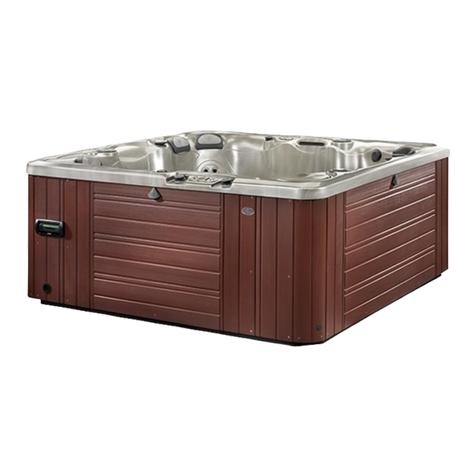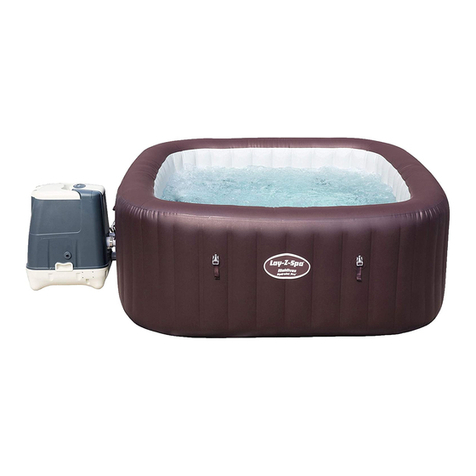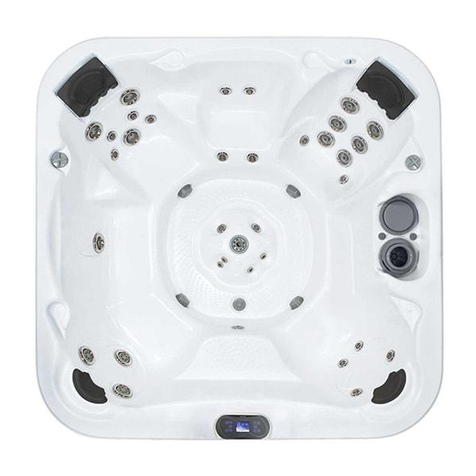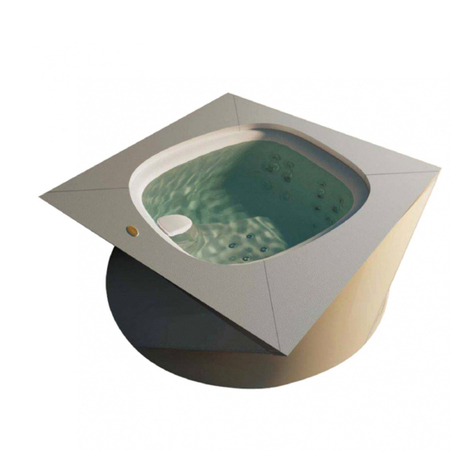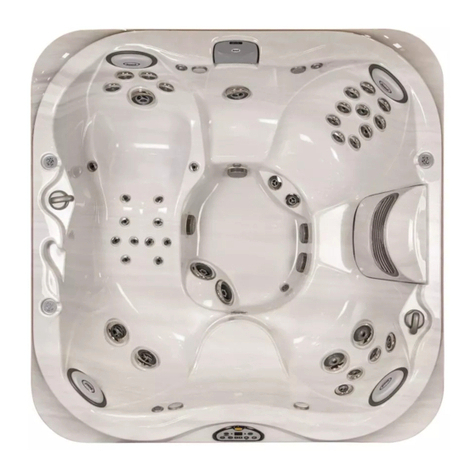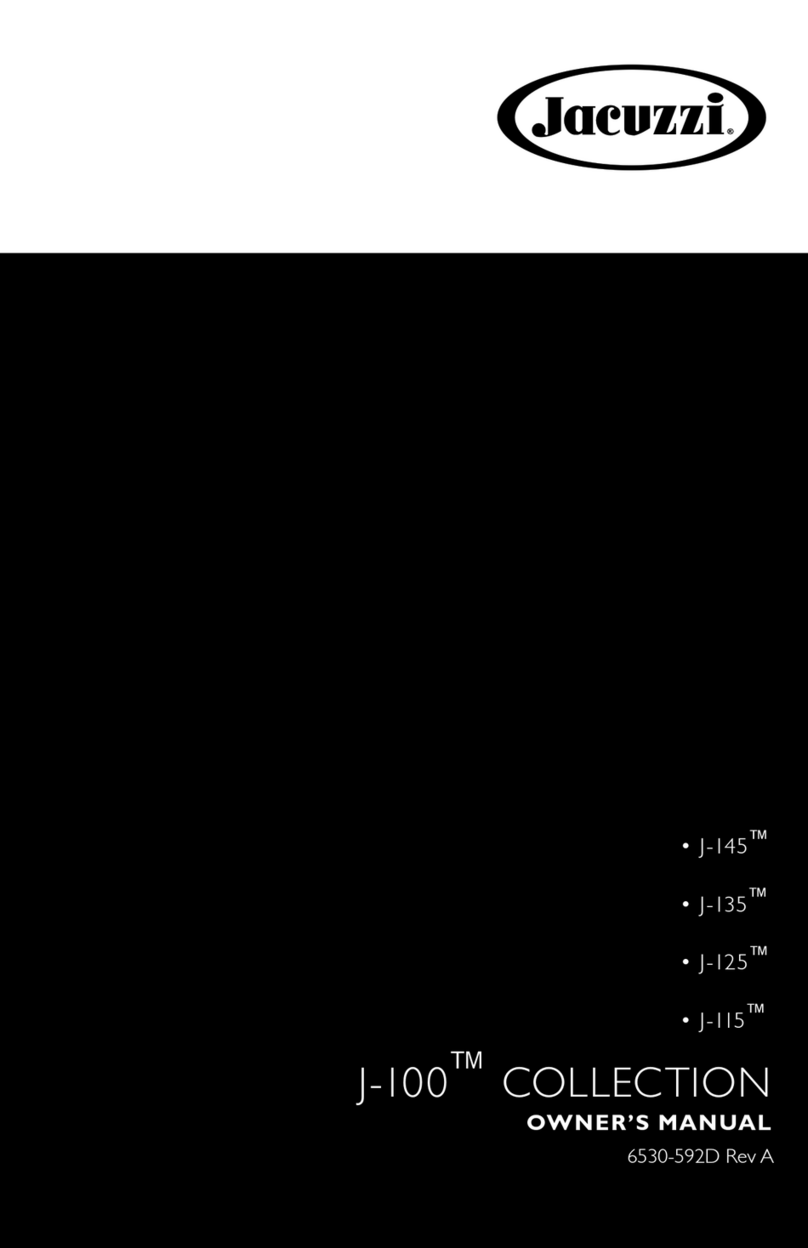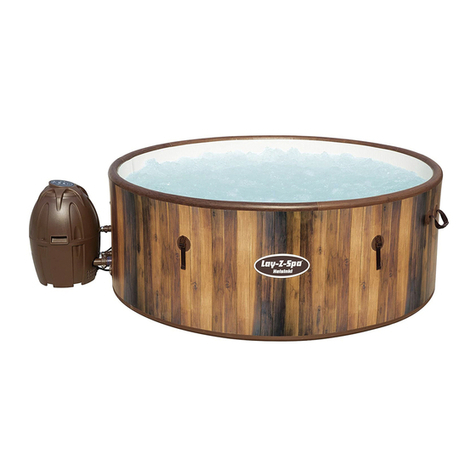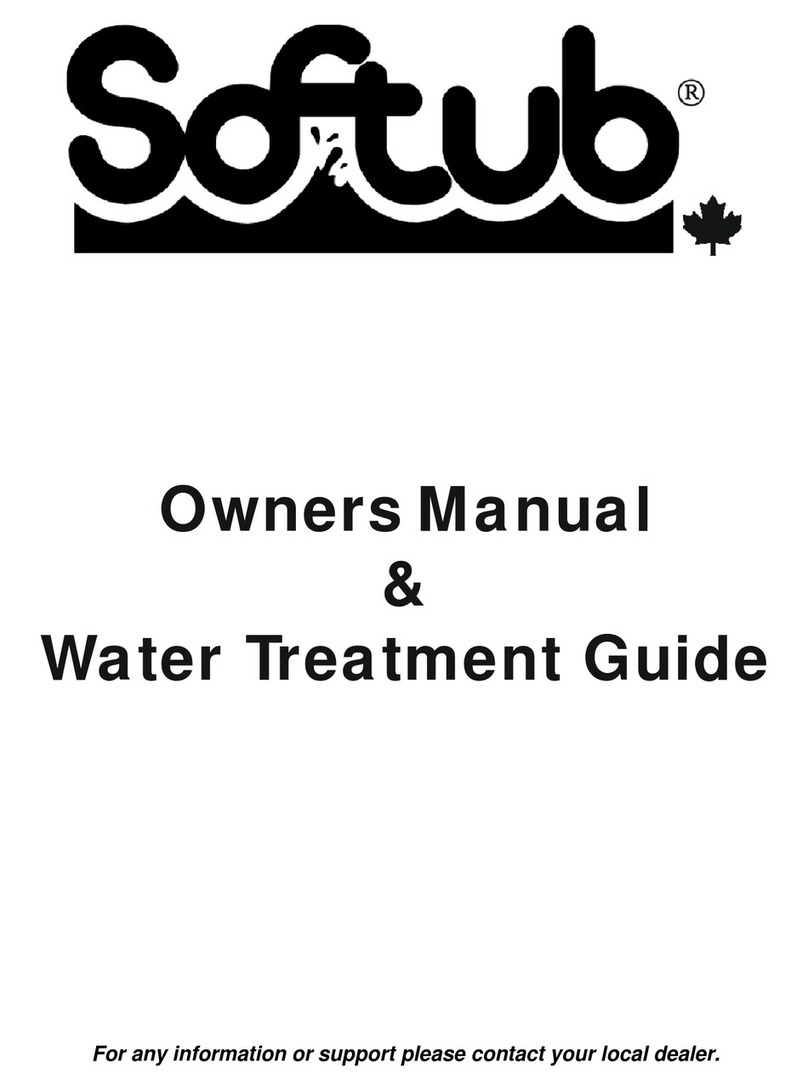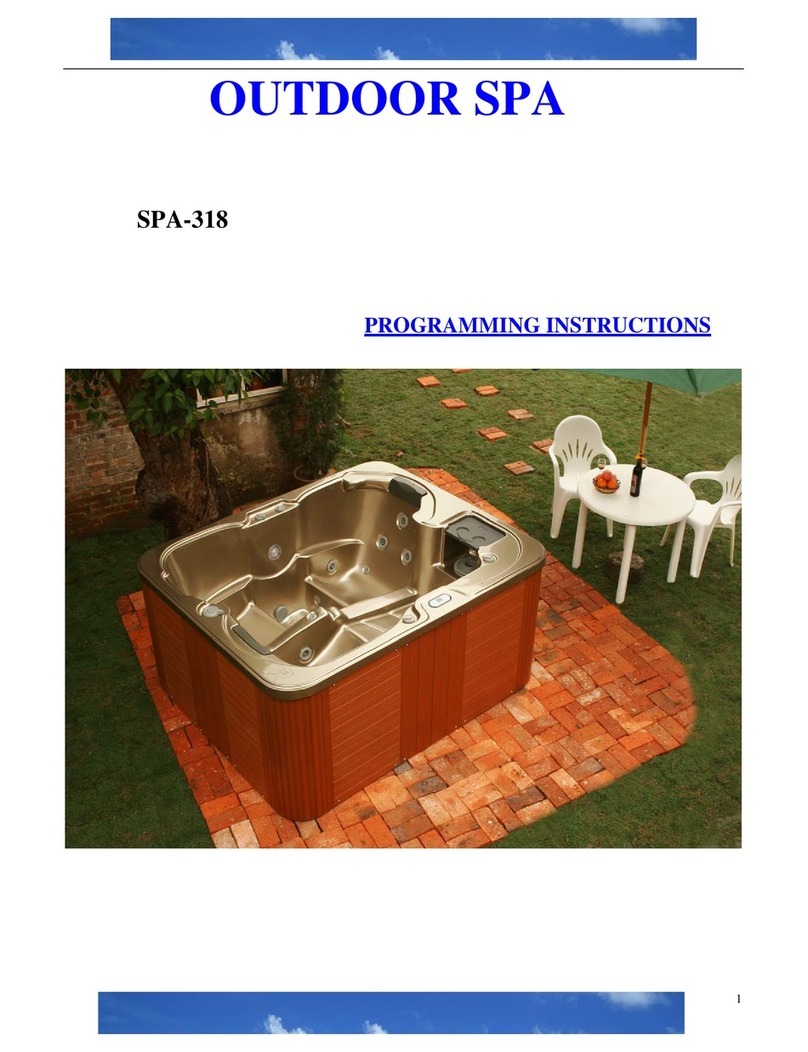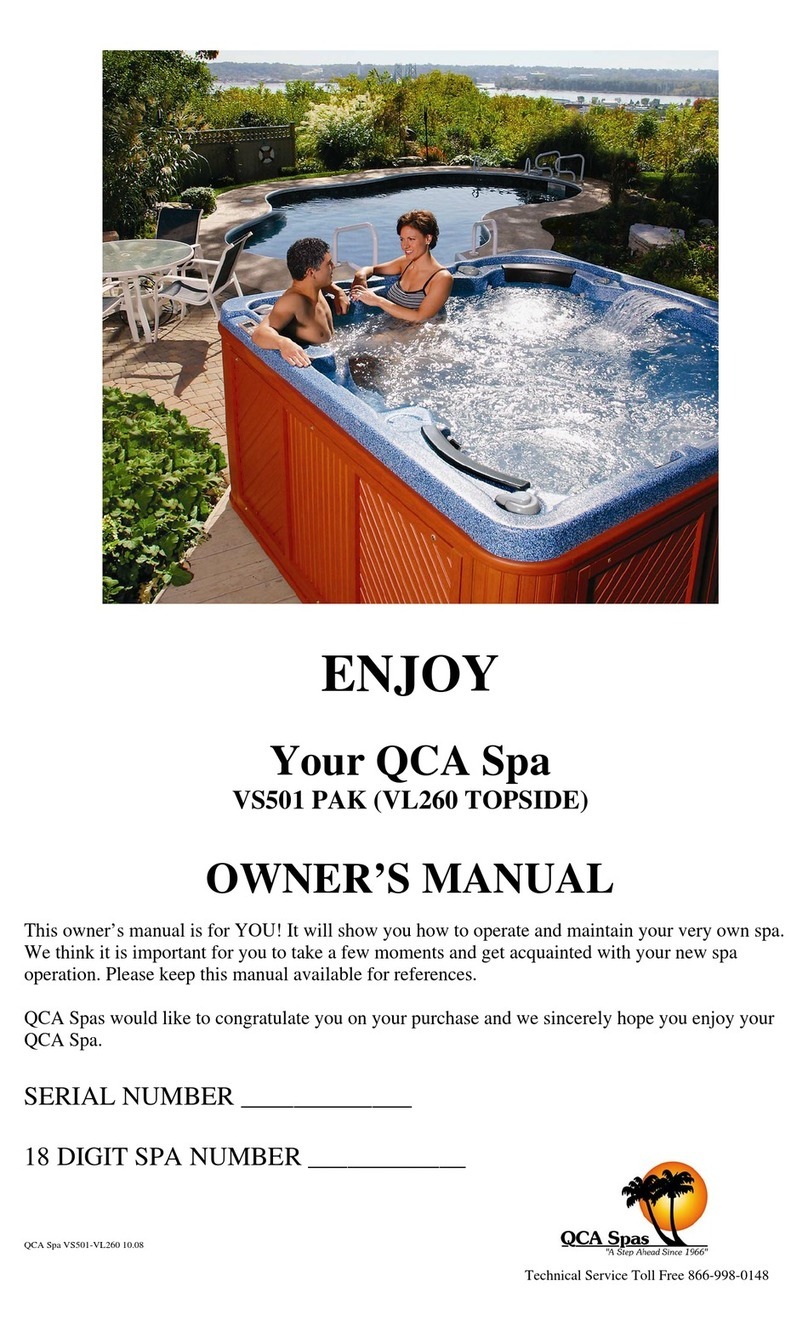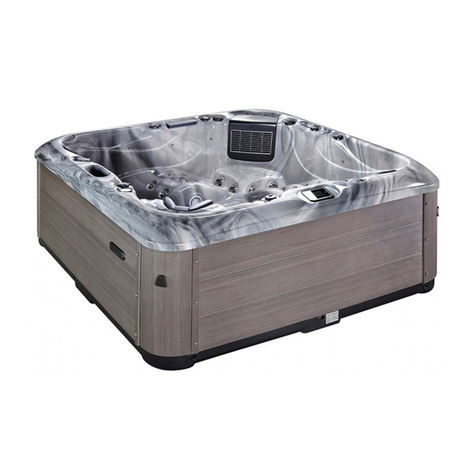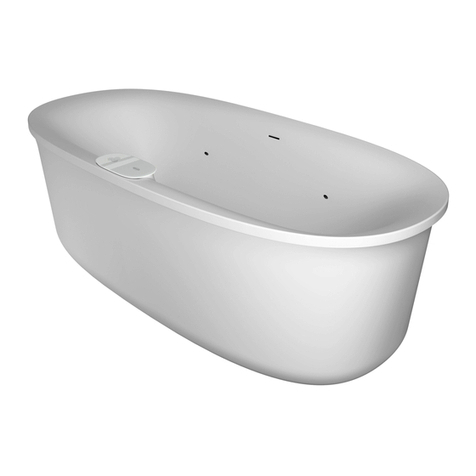The stove and all other metalwork constructed from stainless steel for outdoor use.
Filling and Operation
Fill the tub with cold water using a garden hose. Rainwater can also be collected and used to fill the
tub.
NEVER DRAIN WATER FROM THE TUB WHEN THE STOVE IS IN USE firing the stove without water
will permanently damage the stove and pose risk of fire.
When filled the tub contains approximately 1.8 cubic metres (1800 litres) of water.
Once the tub is filled, kindle a fire in the firebox of the stove. Ensure old ash is removed (it is
beneficial for the garden). Kindle a fire directly onto the floor of the stove. Firelighters may be used.
A water jacket surrounds the fire-box, always use dry wood and keep the fire burning strongly.
Energy produced by the fire is efficiently used to heat the water and if the fire is only burning weakly
or wet material is used then inefficient combustion will occur resulting in excess smoke, soot
deposits and condensation inside the stove.
Once the fire is going keep feeding it with wood as necessary to maintain heat. Tend the fire from
time to time by raking the hot embers to distribute them evenly before adding more wood.
It is best to keep lids on whilst water is heating.
Periodically stir the water in the tub to mix the temperature layers. Because heat rises and cold
sinks, if you do not stir the water will stratify with the upper layer becoming hot and the lower layer
remaining cold. It is difficult to ascertain the overall temperature of the water unless the layers are
well mixed.
Make sure the pipes are not restricted and that water is circulating properly. To check this place
hand near the hot inlet or look for heat haze in the water coming from the inlet to indicate water is
circulating.
It is normal for the stainless steel flue to discolour slightly when the tub has been fired, the metal
may become slightly bronze/golden in colour once it has been heated. This change is not reversible.
Whoever is in charge of the fire is entirely responsible for the heat of the water. It normally takes
between 4 and hours to heat from cold depending on ambient temperature, wood quality and fire
management.
The recommended temperature range for bathing (which can be checked with any type of
thermometer) is 38-42 degrees C.
IMPORTANT If you continue to fire the stove the water will continue to get hotter. Very hot water
may cause burns and eventually may damage the equipment. Please monitor the temperature
regularly as the water heats and stop adding wood to the stove when the desired temperature is
reached.
